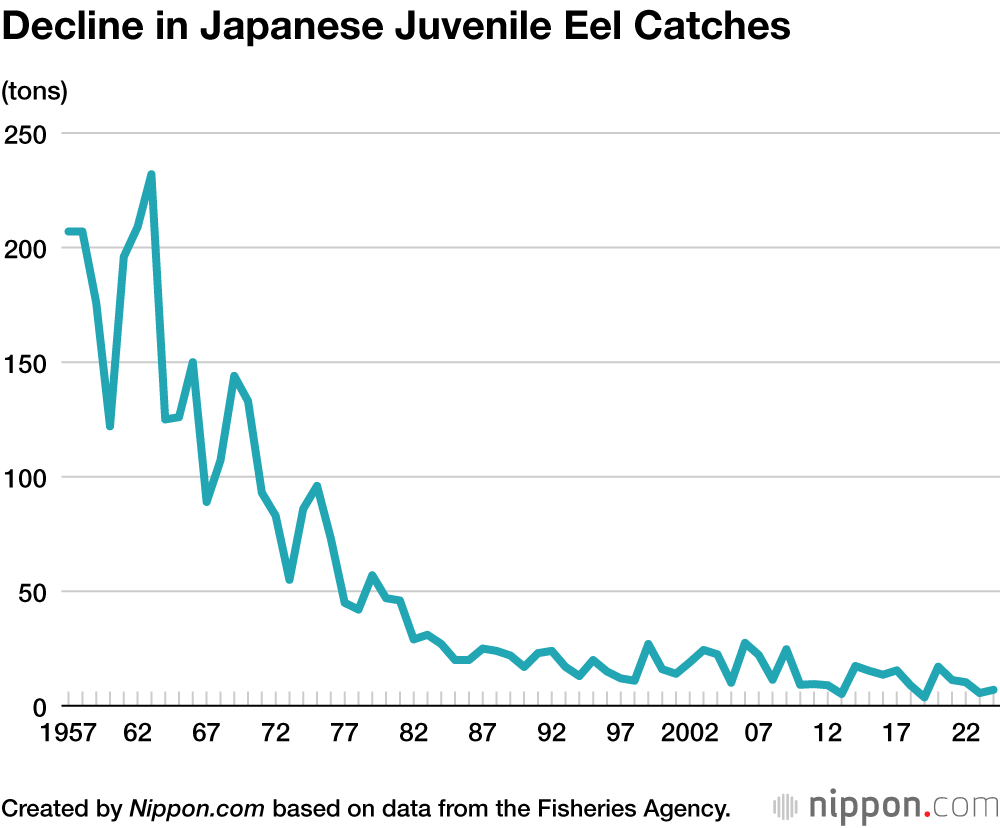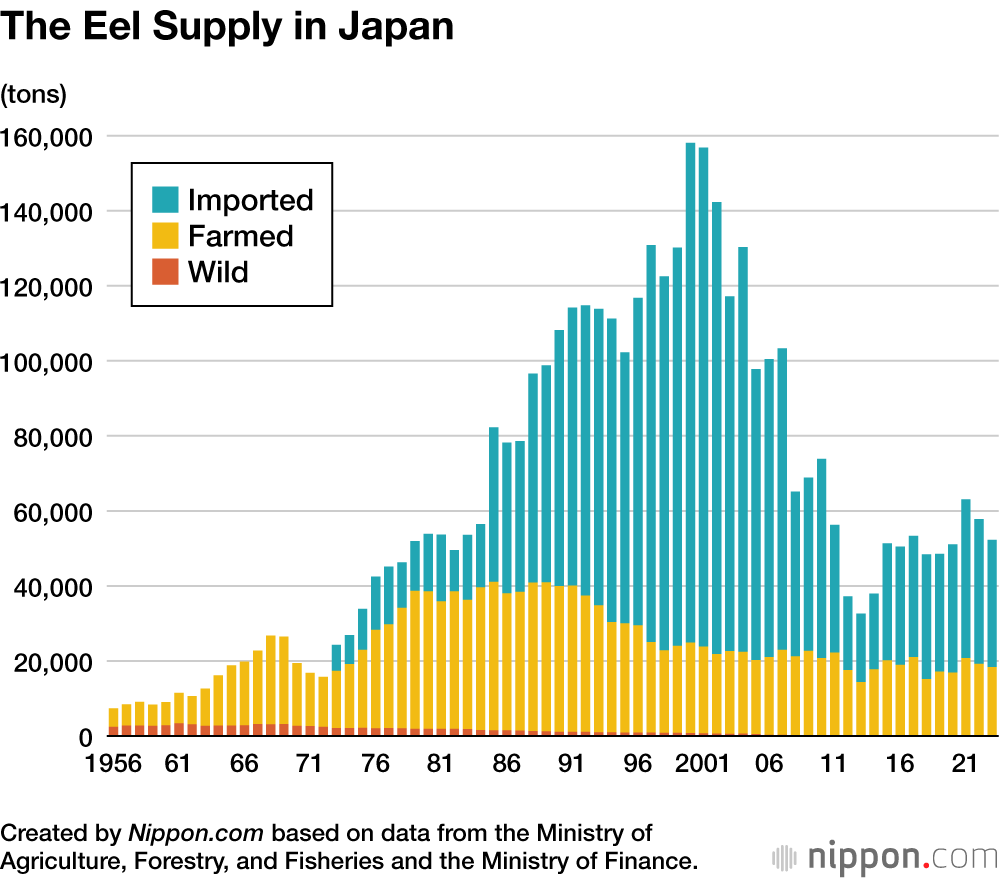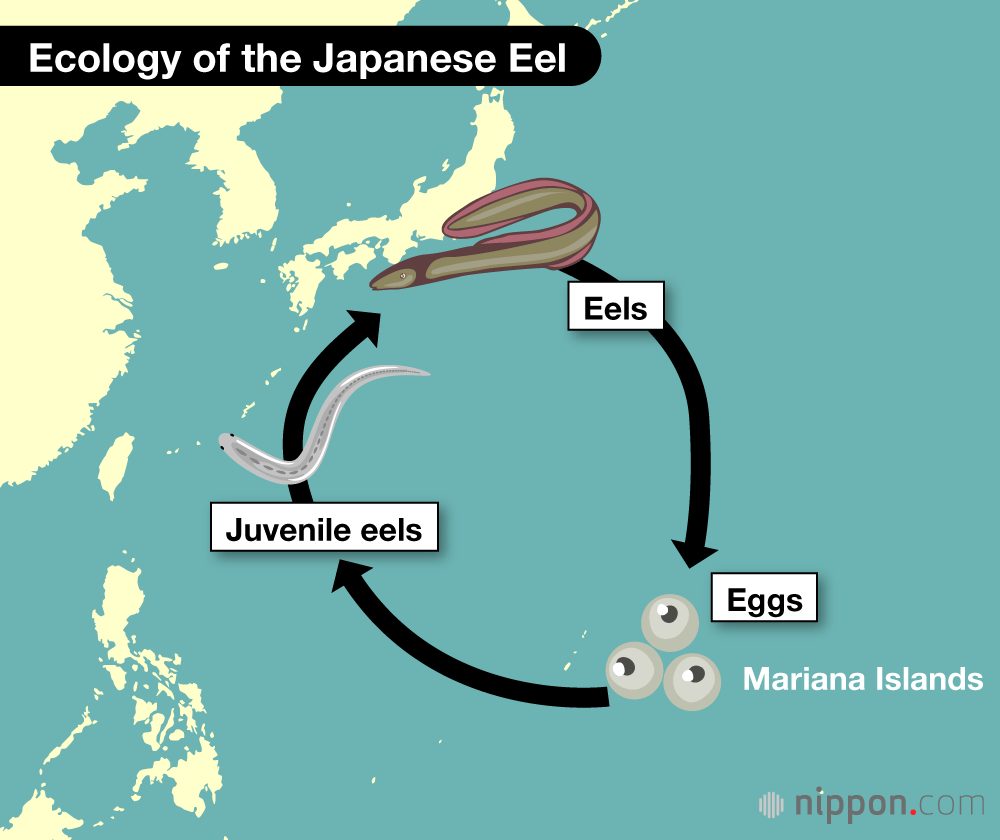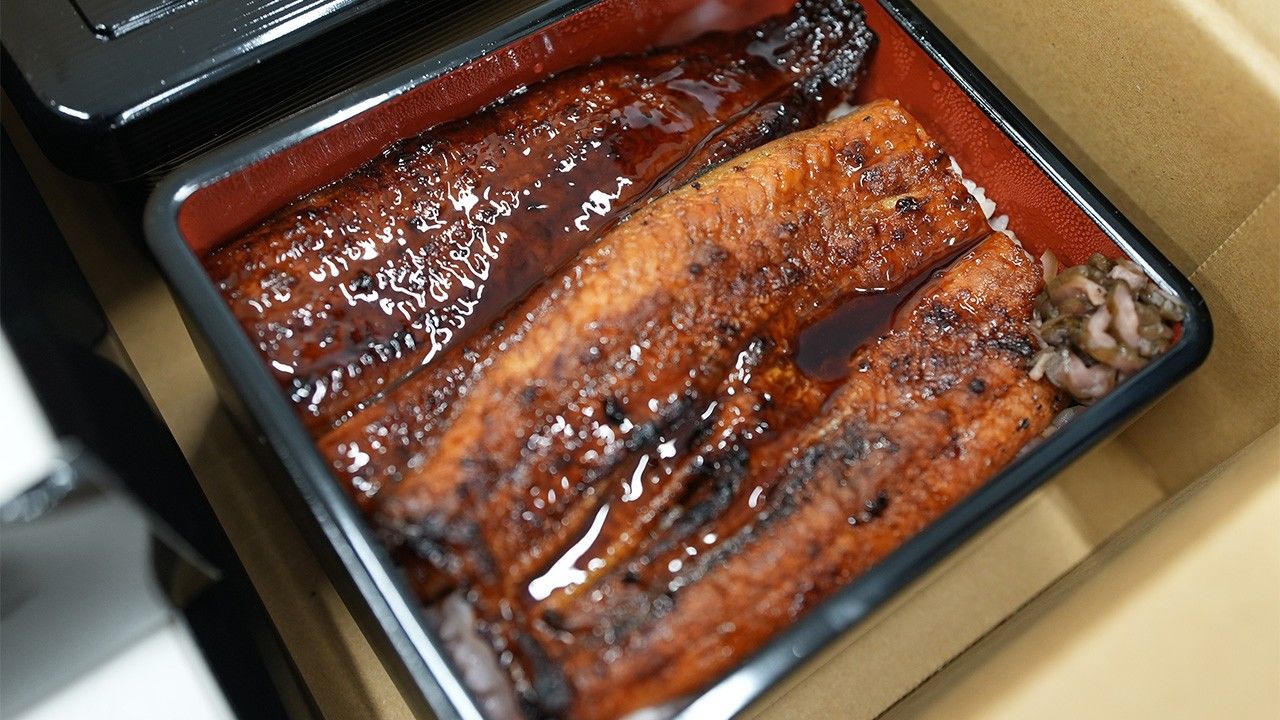
Japanese Aquaculture Technology Could Make Eel Dishes Cheaper
Science Economy Food and Drink- English
- 日本語
- 简体字
- 繁體字
- Français
- Español
- العربية
- Русский
The Fisheries Agency and its research institute Japan Fisheries Research and Education Agency (Yokohama) recently announced the development of technology to artificially mass produce juvenile Japanese eels, known as glass eels or shirasu unagi, which has previously relied on natural resources. It will make possible production of 40,000 to 50,000 juvenile eels a year. The technology will be provided to companies and other organizations to promote its commercial use.
The majority of eels distributed in Japan are caught wild as juveniles and then raised in eel farms. Domestic catches of juvenile eels have remained low since the 1980s, while prices have risen sharply. Moreover, approximately 65% of eels distributed in 2023 in Japan were imported.
A research group, led by the agency, has succeeded in consistent collection of approximately two million fertilized eggs a week from mother eels. A technology was developed whereby eggs are hatched in tanks and the larvae, known as leptocephali, continue on to grow into juvenile eels.
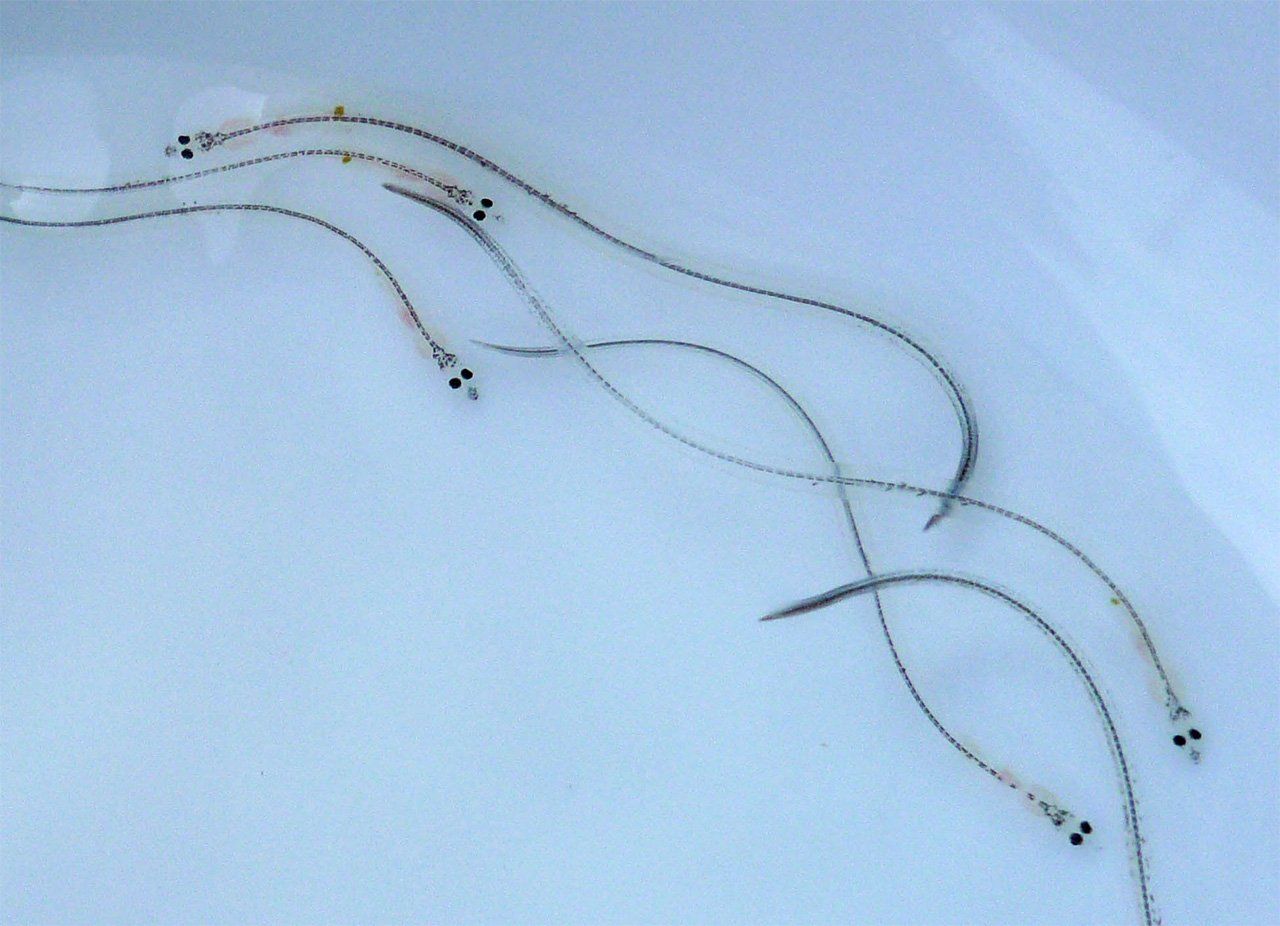
Juvenile eels grown from artificially collected eggs. (Courtesy of the Japan Fisheries Research and Education Agency)
It was not known what hatchlings ate, so the group developed an alternative feed using chicken egg yolks. Its creation of an integrated system of automatic feeding equipment and a large, dedicated tank allowed for efficient and stable production of juvenile eels.
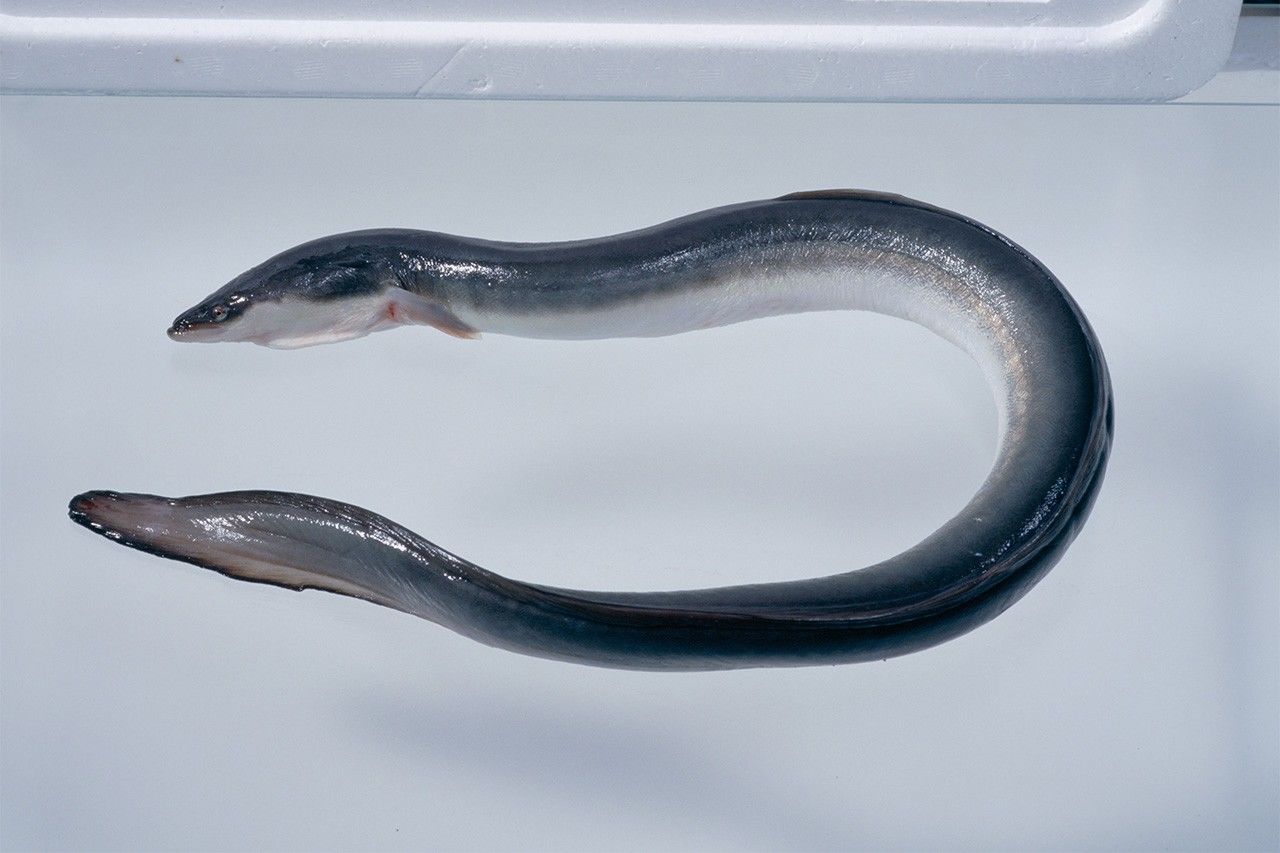
A Japanese eel grown from artificially collected eggs. (Courtesy of the Japan Fisheries Research and Education Agency)
The production cost for each juvenile eel fell from ¥40,127 in fiscal 2016 to ¥1,821 in fiscal 2023, and a Fisheries Agency official has stated that “commercialization is now in sight.” Wild juvenile eels are currently traded at around ¥500 to ¥600 each and the issue is how to further cut costs. The agency states that the taste and texture of Japanese eels raised from artificially collected eggs are indistinguishable from wild ones.
Juvenile eels are five to six centimeters in length and weigh 0.2 grams. Japanese eels, which inhabit rivers in Japan, migrate to the Mariana Islands approximately 2,000 kilometers away to spawn. After hatching, the larvae travel north on the Kuroshio Current while growing into juvenile eels, after which they reach the coast of Japan. According to the Fisheries Agency, 100 million juvenile eels are required every year for domestic eel farming.
(Originally published in Japanese. Banner photo: Unajū (eel on rice) is a popular dish. The piece at the front is an eel raised from an artificially cultivated juvenile eel, while the one behind it is wild eel. The taste and texture are indistinguishable. Courtesy of the Japan Fisheries Research and Education Agency.)

